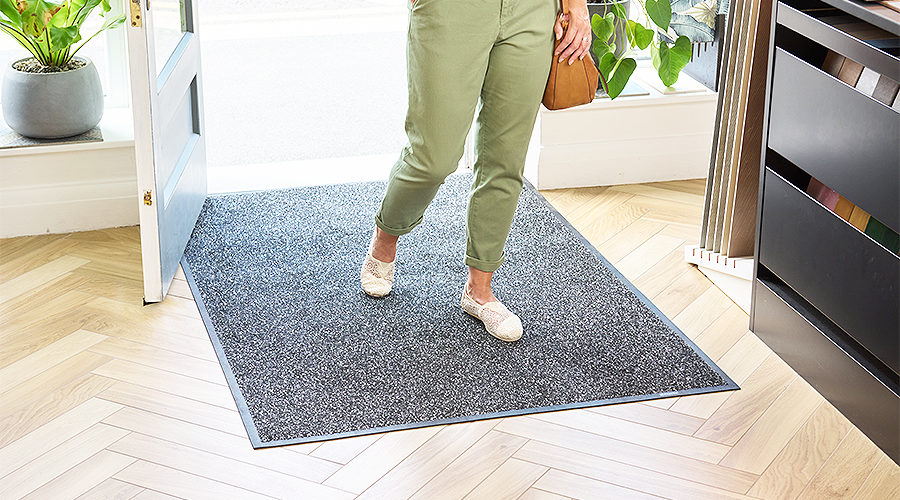Lee Fox, Director of Global Business Development and Key Accounts for Kleen-Tex, one of the world’s leading floor matting manufacturers, discusses how attitudes to floor maintenance and hygiene have changed over the last two years and the latest solutions available to professionals to ensure the highest standards of hygiene and infection control.
Kleen-Tex
There has been a marked shift in attitudes to hygiene and cleanliness in response to the pandemic. A survey by Rubbermaid discovered that 95% of businesses felt they had seen an impact on daily operations due to COVID-19, whilst 43% of organisations had increased their frequency of cleaners on site. 21% had also stated the changes they had made to their cleaning routines throughout the pandemic would remain.
On average, 40% of a building’s cleaning budget is spent on maintaining the floor. By adopting a proactive approach to cleanliness, public sector professionals can significantly increase the efficiency and effectiveness of their floor maintenance and hygiene routines.
This includes the installation of a combination of different types of matting throughout specific areas of a building. The primary role of external entrance matting is to create an initial barrier to dirt, moisture and grit. Here, the installation of floor matting systems that feature an open construction successfully remove coarse dirt, whilst also being resilient enough to withstand the extremes of outdoor environments.
Once inside the entrance, secondary internal entrance mats should be installed across main doorways to trap any remaining dirt and moisture, whilst also welcoming visitors and employees. These mats may be personalised to feature a company’s branding, but their main purpose is to reduce any noise and vibrations caused by people walking over hard surfaces.
It is important to ensure that these types of mats feature smooth, chamfered edges to avoid potential trip hazards and to enable wheeled traffic to travel over the mat. Size is also an important consideration when specifying internal mats, as larger mats tend to be better for dirt transfer, particularly in high-traffic areas, such as main reception areas.
Hygiene also remains an important consideration, as high traffic can generate lots of potential dirt and moisture transfer, so internal mats must also be easy to clean to aid maintenance routines. Once inside the main building, tertiary mats can then be used for a number of different applications, such as in front of lifts and stairways, which experience high levels of footfall.
Whilst ensuring the highest levels of cleanliness and hygiene is the main priority, improving the sustainability of operations continues to grow in importance. Professionals should, therefore, invest in durable, high-quality solutions that are manufactured from environmentally-efficient materials and feature increased lifecycles.
This includes the Kleen-Tex Super-Mat heavy-duty matting system, which features a 100% nitrile rubber backing and is constructed from 100% Econyl fibres, a regenerated nylon textile composed of man-made ocean and landfill waste, including abandoned fish nets. By installing high-performance, PVC-free flooring matting systems such as this, professionals can successfully increase the use of recycled materials throughout their building and evidence the sustainability of their procurement throughout the entire supply chain, whilst also ensuring the highest standards of cleanliness.











